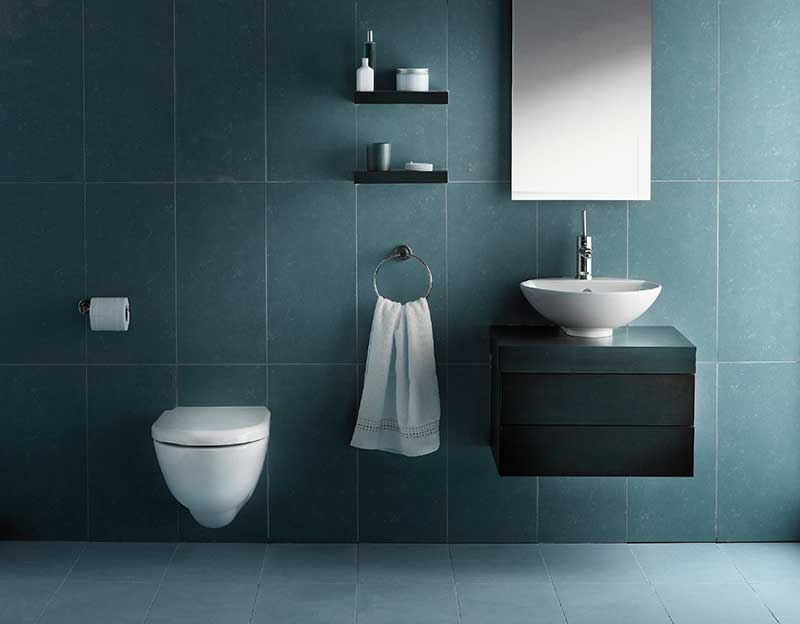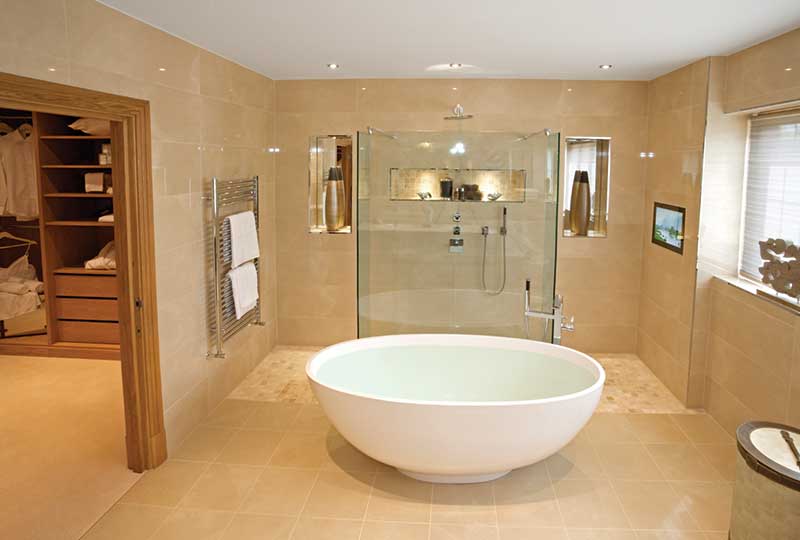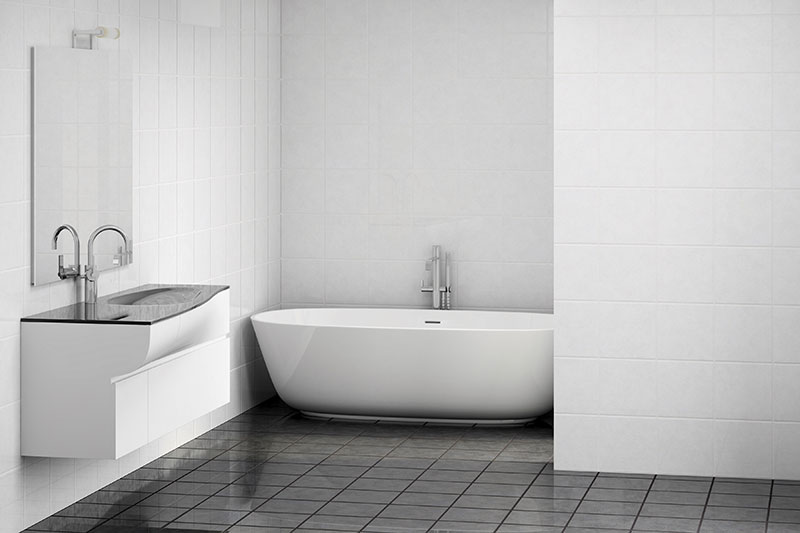Choosing new flooring for your home can be difficult with so many options. If you want beautiful floors that add value, hardwood flooring is the best option. Hardwood flooring also has the added benefit of being one of many flooring materials compatible with radiant heating systems.
These systems are a great option for any home, either as a supplemental or a main system. The question most homeowners have when considering a radiant system is how much it would cost to heat their floors. This article will look at the costs of heated hardwood floors, including the various factors that go into the cost.
How Does Heated Flooring Work?
By heating the floor rather than the surrounding air, radiant floor heating systems generate heat through thermal radiation. They supply diffused, indirect heat by warming the floor rather than the surrounding air. The objects in the path of the electromagnetic waves absorb this heat, which then warms other items in the room. Thermal energy is transferred through electromagnetic waves throughout the atmosphere via radiation.
These electromagnetic waves contain potential energy until they come in contact with a solid object, such as flooring, furniture, etc., they release their energy in the form of heat. You, therefore, enjoy the benefit of the radiant heat, which is more evenly distributed than forced air heat, even when the surrounding air temperature is low.
Comfort is typically felt sooner and at a lower temperature with radiant heat. There is less air circulation, resulting in a consistent and pleasant temperature throughout the space.
How Much Does it Cost to Heat Hardwood Floors?
There is no set cost for heated wood flooring. To determine how much heated floors cost per square foot would, you have to consider several different factors. These factors include:
The Type of Floor
Radiant heat flooring works with various flooring, including hardwood, engineered wood, and laminate. While these are all compatible, they have their advantages and disadvantages.
Type of System
There are two forms of radiant heating: hydronic and electric. While both systems use the same process, their heat source varies, with electric systems relying on electricity and hydronic systems relying on water. With these systems, you have to consider installation and operational costs, which also have several factors to consider.
System Size
The size of your system plays a significant role in determining your heated wood floor cost. Bigger systems require not only more product but also more labor and more areas that require heating.
Labor and Installation
Depending on your chosen system, you can hire a professional or install it yourself. Electric radiant heating is a DIY-friendly project homeowners can take on themselves to save money. You will need a licensed electrician to do the electrical work for electric radiant heating.
Hydronic systems require a licensed plumber, which can add up in cost because of a complex installation process.
Besides the labor and installation costs for the system, there is also the floor installation to consider, which you can again do yourself or hire someone to do it for you. You can also view our guide to learn more about the installation process for radiant floor heating.
Thickness of Flooring
Wood comes in a variety of thicknesses, which can impact heat transfer. Thicker woods will slow the heat transfer by a small degree, making radiant heating systems take longer to reach optimal temperatures. This can increase energy costs.
Smart Thermostat Use
Radiant heating systems are controlled by smart thermostats, which make it possible to program schedules and create zones that can help create a more energy-efficient system and save you money on operational costs.
Can Hardwood, Wood, or Laminate Floors be Heated?
Yes! Hardwood, wood, and laminate can all work with radiant floor heating. Here’s more information about each option:
Hardwood
Hardwood, for example, is an excellent choice because it can naturally conduct heat. It allows for a more efficient heat transfer. Still, it can be susceptible to expansion and contraction with temperature changes, so you must install it carefully and maintain it well.
Heated Hardwood Floors Costs
What you pay for hardwood flooring is determined by numerous factors. The species of wood you select is the first area where you see a price difference. Woods like Brazillian walnut will cost more due to their durability. Other price factors are the width and thickness of the planks, with wider, thicker planks costing more.
Grading is also something to consider; higher grades will cost more as they will have fewer imperfections. Pattern and style can also factor into the cost. Finally, the finish you choose can affect the cost of materials
Engineered Wood
Engineered wood’s layered construction minimizes the potential for warping or gaps, which makes it more stable.
Heated Wood Floors Costs
The material cost considerations of engineered wood are similar to those of hardwood. The size of the planks will help determine what you pay; the wider and thicker the plank, the more it will cost. You’ll also still pay more for certain spices, including Brazilian walnut, cypress, and mahogany will cost more than options like pine. Like hardwood, you’ll pay more for top-quality, high-grade, durable products.
Laminate
Laminate does have limitations with how high you can heat it, but it is still an option to consider. It is the most cost-effective option in terms of material.
Heated Laminate Flooring Costs
With laminate, fewer factors affect the product cost. You will generally pay about the same whether you buy laminate wood, tile, or stone. The thickness and finish of the product also affect the price you pay. Thicker laminate flooring will cost more per square foot than flooring with a high-gloss finish because they offer better water resistance.
Radiant Heated Floors Cost Per Square Foot
The cost of heated floors isn’t just determined by the material and radiant system you choose. The size of the room also determines how much it will cost. As a general idea, the larger the room, the more you can expect to pay, but those costs can vary depending on the material.
For hardwood, you can expect the costs to be between $6 to $23 per square foot of space, which adds up quickly in large spaces. Engineered wood costs a little less, sitting at $3 to $16 per square foot. Finally, heated laminate flooring costs can be anywhere from $3 to $11.20 per square foot.
Insulating Your Walls for Radiant Floor Heating
Never underestimate the importance of wall insulation. Well-insulated walls can greatly impact how well your home heats and cools. If there isn’t sufficient insulation in the walls, heat can escape, forcing your HVAC system to work harder to compensate for the loss. This results in higher energy bills.
A well-insulated home will greatly minimize heat loss, ensuring your heating system isn’t working overtime and saving you hundreds on your energy bill.
There are many types of insulation, with blanket batts and rolls of fiberglass being the cheapest, costing up to $2 per square foot. Blown-In insulation is the next cheapest, made from recycled cellulose material, and costs between $1.65 and $3.80 per square foot.
Foam board is the best option for home exterior and is extremely effective, costing between $2.40 to $3.75 per square foot. Finally, the most expensive option is spray form insulation, made of liquid polyurethane that hardens into a solid, thick foam. Spray foam insulation can cost between $3.15 and $7.50 per square foot and should be installed by a professional.
Labor and Installation Costs
A homeowner can install radiant heat systems and flooring if willing to take on the task. Doing so will significantly cut down on costs.
Generally, hiring a professional to do the work could cost between $260 to $400 per day. For a Warmup system, installation should take 1 to 1.5 days, making the costs for radiant heated floors increase up to $520, but this cost can vary by region.
This is just the cost of installing the radiant heating system; floor installation and labor are additional costs. You pay around $3 to $6 for hardwood per square foot. Engineered wood will cost $3 to $8 in labor, and laminate will cost $2 to $7.
The Best Floor is a Heated Floor
Heated floors don’t just sound cool; they offer many great benefits too.
They provide more consistent heating with their heat-transfer technology, allowing the system to warm rooms quickly at lower temperatures and provide significant savings. They are also more reliable than traditional systems while also requiring less maintenance—eliminating the need for bulky furnaces that take up space in a utility closet.
You can also use radiant floor heating to create zones throughout your house that will give you more control over the temperature in each space.
Nevertheless, whether you’re using radiant floor heating as the main heating source or as a supplemental heating system, having heated floors is worth the cost.
If you would like to learn more about the benefits of radiant floor heating and how heating compares to other traditional heating solutions, view our ultimate guide to radiant floor heating systems.
Contact us today to learn more about Warmup’s products, how they work with various types of flooring, and what system will be best for your flooring choice.




